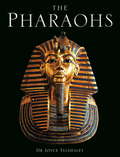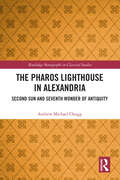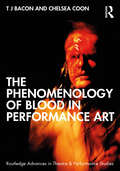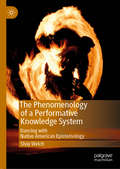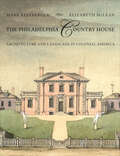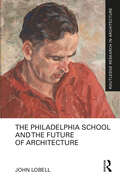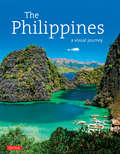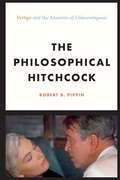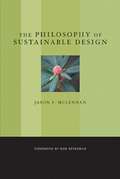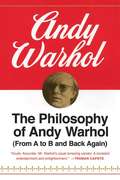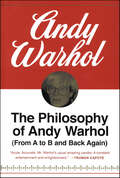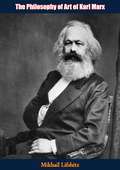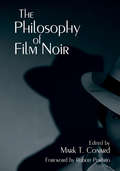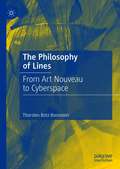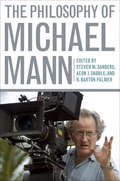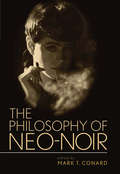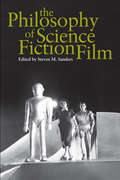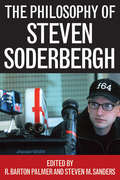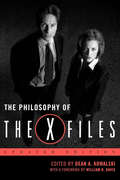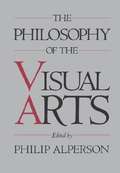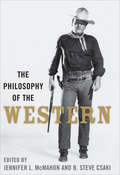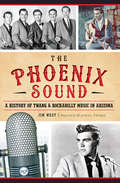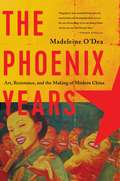- Table View
- List View
The Pharaohs
by Doctor Joyce Tyldesley'Concerning Egypt itself, I shall extend my remarks to a great length, because there is no country that possesses so many wonders.' The Greek writer Herodotus wrote these words as long ago as the 5th century BC, and the ancient civilization of Egypt has continued to cast its spell on historians, archaeologists and visitors ever since. Thanks to its geographical isolation, Egypt developed a unique and self-contained culture whose religion, customs, art, architecture and social structures changed little over 3000 years. And its dry climate led to the preservation of a wealth of monuments including ancient cities, pyramids, temples and other sumptuous artefacts. The Pharaohs is an illustrated history of the kings who ruled over this extraordinary land, narrating the story of 30 dynasties starting around 3100 BC when the first pharaoh, Menes, unified Upper and Lower Egypt, and ending with the conquest of Egypt in 332 BC by Alexander the Great. It profiles powerful, and sometimes enigmatic, rulers such as Mentuhotep II, Thutmose III, Amenophis II, Akhenaten, Tutankhamun and Ramesses II. The story of these kings includes such seminal events in ancient Egyptian history as the development of the science of writing and the building of the first pyramid at Saqqara during the Archaic Period; the building of the pyramids at Giza by the centralized administration of the Old Kingdom; the expansion of trade with the Levant and Nubia during the Middle Kingdom (the 'classical' phase of pharaonic civilization); the rule of the foreign Hyksos kings and their introduction of technical innovations such as the horse-drawn chariot; the undertaking of grandiose building projects in the Valley of the Kings by the pharaohs of New Kingdom; expansion into Palestine and Syria which led to conflict with the Hittites; the long decline of Egypt during the Late Period, culminating in its invasion and annexation by Persia and its eventual conquest by Alexander the Great.
The Pharos Lighthouse In Alexandria: Second Sun and Seventh Wonder of Antiquity (Routledge Monographs in Classical Studies)
by Andrew Michael ChuggThis comprehensive and insightful book brings scientific rigor to the problems of reconstructing the Pharos Lighthouse, one of the Seven Wonders of the Ancient World, and understanding how it functioned as the archetypal lighthouse in antiquity, when it was described as a “second Sun”.Conceived by Alexander the Great and designed by Sostratus, the Pharos lighthouse stood as an iconic landmark of Alexandria for sixteen centuries until felled by a calamitous earthquake in the fourteenth century. The study of this great lighthouse has been neglected relative to other ancient Wonders such as the Great Pyramid of Giza. This book reconstructs the tower, its lustrous light, stunning statues and astounding story in diligent detail through archaeological evidence and surviving antique texts and images, providing a fresh evaluation of the Pharos, its history, and its legacy. The Roman writer Achilles Tatius termed the Pharos a “second Sun”; this expression is explained and explored here for the first time, and has dramatic implications for the nature of the Pharos’ light. The volume also explores how the creation of the Pharos was a key stimulus for Alexandrian science and astronomy in antiquity.The Pharos Lighthouse in Alexandria provides a fascinating new study of this monument of interest to students and scholars of Hellenistic art, architecture, and science, and readers seeking to learn more about one of the Seven Wonders of the Ancient World.
The Phenomenology of Blood in Performance Art (Routledge Advances in Theatre & Performance Studies)
by T. J. Bacon Chelsea CoonThe Phenomenology of Blood in Performance Art is a major new publication that expands the philosophical contextualisation of blood, its presence and absence, across the practice of performance art from a phenomenological perspective.Edited by T. J. Bacon (she/they) and Chelsea Coon (she/her), this book moves through an established cannon of artists and beyond to ensure an inclusive representation of practices from a wider range of practitioners. First-hand interviews and conversations have been gathered from both canonical names as well as individuals who are prevalent in their communities and/or respective subcultures, but less represented within the frameworks of scholarly discourse. Each offers the opportunity to examine their experiences creating artworks and in turn contributes to the context of phenomenological examination within this publication through complementary scholarly texts from leading thinkers who frame phenomenological application to both visual art and transdisciplinary context. Featuring artists through new exclusive interviews and contributions including Marina Abramović, Jelili Atiku, Ron Athey, Franko B, Niya B, Marisa Carnesky, Chelsea Coon, Victor Martinez Diaz, Rufus Elliot, Ernst Fischer, Louis Fleischauer, Poppy Jackson, Mirabelle Jones, Andrei Molodkin, Hermann Nitsch, ORLAN, Mike Parr, Greta Sharp, tjb and Paola Paz Yee, and reference to many more. Alongside new scholarly insight by leading phenomenological and interdisciplinary art scholars and philosophers including T. J. Bacon, Chelsea Coon, Stuart Grant, Kelly Jordan, Lynn Lu, Roberta Mock, Amber Musser and Raegan Truax. Together they represent a significant exploration of intricate and dynamic responses to the cultural fabric of contemporary lived experiences across space and time through the medium of blood in performance art.This incredible analysis of this performance art will be of huge interest to students and practitioners of live art, performance art, phenomenology, and performance philosophy.
The Phenomenology of a Performative Knowledge System: Dancing with Native American Epistemology (Performance Philosophy)
by Shay WelchThis book investigates the phenomenological ways that dance choreographing and dance performance exemplify both Truth and meaning-making within Native American epistemology, from an analytic philosophical perspective. Given that within Native American communities dance is regarded both as an integral cultural conduit and “a doorway to a powerful wisdom,” Shay Welch argues that dance and dancing can both create and communicate knowledge. She explains that dance—as a form of oral, narrative storytelling—has the power to communicate knowledge of beliefs and histories, and that dance is a form of embodied narrative storytelling. Welch provides analytic clarity on how this happens, what conditions are required for it to succeed, and how dance can satisfy the relational and ethical facets of Native epistemology.
The Philadelphia Country House: Architecture and Landscape in Colonial America
by Elizabeth McLean Mark E. ReinbergerA highly readable, beautifully illustrated study of the homes built by elite colonial Philadelphians as retreats—which balanced English models with developing local taste.Colonial Americans, if they could afford it, liked to emulate the fashions of London and the style and manners of English country society while at the same time thinking of themselves as distinctly American. The houses they built reflected this ongoing cultural tension. By the mid-eighteenth century, Americans had developed their own version of the bourgeois English countryseat, a class of estate equally distinct in social function and form from townhouses, rural plantations, and farms. The metropolis of Philadelphia was surrounded by a particularly extraordinary collection of country houses and landscapes. Taken together, these estates make up one of the most significant groups of homes in colonial America.In this masterly volume, Mark Reinberger, a senior architectural historian, and Elizabeth McLean, an accomplished scholar of landscape history, examine the country houses that the urban gentry built on the outskirts of Philadelphia in response to both local and international economic forces, social imperatives, and fashion. What do these structures and their gardens say about the taste of the people who conceived and executed them? How did their evolving forms demonstrate the persistence of European templates while embodying the spirit of American adaptation?The Philadelphia Country House explores the myriad ways in which these estates—which were located in the country but responded to the ideas and manners of the city—straddled the cultural divide between urban and rural. Moving from general trends and building principles to architectural interiors and landscape design, Reinberger and McLean take readers on an intimate tour of the fine, fashionable elements found in upstairs parlors and formal gardens. They also reveal the intricate working world of servants, cellars, and kitchen gardens. Highlighting an important aspect of American historic architecture, this handsome volume is illustrated with nearly 150 photographs, more than 60 line drawings, and two color galleries.
The Philadelphia School and the Future of Architecture (Routledge Research in Architecture)
by John LobellFlourishing from 1951 to 1965, the Philadelphia School was an architectural golden age that saw a unique convergence of city, practice, and education, all in renewal. And it was a bringing together of architecture, city and regional planning, and landscape architecture education under the leadership of Dean G. Holmes Perkins. During that time at the architecture school at the University of Pennsylvania (known as the Graduate School of Fine Arts or GSFA), Louis Kahn and Robert Venturi were transforming modern architecture; Romaldo Giurgola was applying continental philosophy to architectural theory; Robert Le Ricolais was building experimental structures; Ian McHarg was questioning Western civilization and advancing urban and regional ecology; Herbert Gans was moving into Levittown; and Denise Scott Brown was forging a syncretism of European and American planning theory and discovering popular culture. And in the city, Edmund Bacon was directing the most active city planning commission in the country. This book describes the history of the school, the transformation of the city of Philadelphia, and the philosophy of the Philadelphia School in the context of other movements of the time, and looks at what the Philadelphia School has to offer to architecture today and in the future, all from the point of view of a student who was there.
The Philippines: A Visual Journey
by Elizabeth V. ReyesThis beautifully photographed travel pictorial captures the people, art, architecture, food and landscapes of the Philippines.The Philippine Archipelago with its 7,100 islands is culturally diverse and unique in Southeast Asia, and renowned for the splendor of its coastal beaches and terraced mountains. Seventy million Filipinos have been nurtured by both tropical environment and unique historical development-through 300 years of Spanish Chistianization and 40 years of American modernization-and have emerged as an attractive blend of East and West, soul and style. The island country is perhaps best known for the friendliness of its people and their natural sense of song, dance and hospitality. The archipelago is also called "Pearl of the Orient".With over 150 photographs and a detailed map, The Philippines: A Visual Journey is an essential book for expats or tourists traveling to the Philippines.
The Philosophical Hitchcock: “Vertigo” and the Anxieties of Unknowingness
by Robert B. PippinOn the surface, The Philosophical Hitchcock: Vertigo and the Anxieties of Unknowingness, is a close reading of Alfred Hitchcock’s 1958 masterpiece Vertigo. This, however, is a book by Robert B. Pippin, one of our most penetrating and creative philosophers, and so it is also much more. Even as he provides detailed readings of each scene in the film, and its story of obsession and fantasy, Pippin reflects more broadly on the modern world depicted in Hitchcock’s films. Hitchcock’s characters, Pippin shows us, repeatedly face problems and dangers rooted in our general failure to understand others—or even ourselves—very well, or to make effective use of what little we do understand. Vertigo, with its impersonations, deceptions, and fantasies, embodies a general, common struggle for mutual understanding in the late modern social world of ever more complex dependencies. By treating this problem through a filmed fictional narrative, rather than discursively, Pippin argues, Hitchcock is able to help us see the systematic and deep mutual misunderstanding and self-deceit that we are subject to when we try to establish the knowledge necessary for love, trust, and commitment, and what it might be to live in such a state of unknowingness. A bold, brilliant exploration of one of the most admired works of cinema, The Philosophical Hitchcock will lead philosophers and cinephiles alike to a new appreciation of Vertigo and its meanings.
The Philosophy Of Sustainable Design
by Jason F. MclennanOutlines the major ideas and issues in the movement of green architecture and sustainable design. This book is intended as a starting point for those involved in the building industry. It asks individuals to understand how the philosophy of sustainable design can affect their own work.
The Philosophy of Andy Warhol: From A to B and Back Again
by Andy WarholThe private Andy Warhol talks: about love, sex, food, beauty, fame, work, money, success; about New York and America; and about himself--his childhood in McKeesport, Pennsylvania, good times and bad times in the Big Apple, the explosion of his career in the sixties, and life among celebrities.
The Philosophy of Andy Warhol: From A to B and Back Again
by Andy WarholIn The Philosophy of Andy Warhol, the enigmatic, legendary Warhol makes the reader his confidant on love, sex, food, beauty, fame, work, money, success, and much more.Andy Warhol claimed that he loved being outside a party—so that he could get in. But more often than not, the party was at his own studio, The Factory, where celebrities—from Edie Sedgwick and Allen Ginsberg to the Rolling Stones and the Velvet Underground—gathered in an ongoing bash.A loosely formed autobiography, told with his trademark blend of irony and detachment, this compelling and eccentric memoir riffs and reflects on all things Warhol: New York, America, and his childhood in McKeesport, Pennsylvania, as well as the explosion of his career in the sixties, and his life among the rich and famous.
The Philosophy of Argument and Audience Reception
by Christopher W. TindaleRecent work in argumentation theory has emphasized the nature of arguers and arguments along with various theoretical perspectives. Less attention has been given to the third feature of any argumentative situation - the audience. This book fills that gap by studying audience reception to argumentation and the problems that come to light as a result of this shift in focus. Christopher W. Tindale advances the tacit theories of several earlier thinkers by addressing the central problems connected with audience considerations in argumentation, problems that earlier philosophical theories overlook or inadequately accommodate. The main tools employed in exploring the central issues are drawn from contemporary philosophical research on meaning, testimony, emotion and agency. These are then combined with some of the major insights of recent rhetorical work in argumentation to advance our understanding of audiences and suggest avenues for further research.
The Philosophy of Art of Karl Marx
by Mikhail LifshitzThe Philosophy of Art of Karl Marx, first published in 1933, is one of the major works of the Russian aesthetician and literary critic Mikhail Aleksandrovich Lifshitz. The author and editor of numerous books and articles in Marxist aesthetics, including ‘Marx and Engels on Art’ 1933, and ‘Lenin and Culture and Art’ 1938. Lifshitz has been since 1925 a teacher of philosophy and aesthetics in higher education institutes in Moscow. His writings have ranged from studies of contemporary bourgeois culture to the history of aesthetics and the relations between political commitment and artistic production. Since the war much of his work has concerned itself with modern Russian and European culture.The Philosophy of Art of Karl Marx, is notable for its originality of method in approaching the subject of Marx’s aesthetics. Far from being a mere compendium of Marx’s comments on art and literature, it treats his writing in this field as an integral part of the totality of his thought. In his complex but lucid argument Lifshitz demonstrates the relations between Marx’s changing views of art and the development of his revolutionary theory – ranging from Marx’s own early Romantic poetry to ‘Capital’. In the process the book discusses some of Marx’s comment on art, in notebooks and articles, which are still little known.-Print ed.
The Philosophy of Film Noir (The Philosophy of Popular Culture #Ppcs)
by Mark T. ConardAn essay collection examining the philosophical elements of select films in noir cinema, as well as the genre’s legacy in film and culture.A drifter with no name and no past, driven purely by desire, is convinced by a beautiful woman to murder her husband. A hard-drinking detective down on his luck becomes involved with a gang of criminals in pursuit of a priceless artifact. The stories are at once romantic, pessimistic, filled with anxiety and a sense of alienation, and they define the essence of film noir. Noir emerged as a prominent American film genre in the early 1940s, distinguishable by its use of unusual lighting, sinister plots, mysterious characters, and dark themes. From The Maltese Falcon (1941) to Touch of Evil (1958), films from this classic period reflect an atmosphere of corruption and social decay that attracted such accomplished directors as John Huston, Alfred Hitchcock, Billy Wilder, and Orson Welles.The Philosophy of Film Noir is the first volume to focus exclusively on the philosophical underpinnings of these iconic films. Drawing on the work of diverse thinkers, from the French existentialist Albert Camus to the Frankurt school theorists Max Horkheimer and Theodor Adorno, the volume connects film noir to the philosophical questions of a modern, often nihilistic, world. Opening with an examination of what constitutes noir cinema, the book interprets the philosophical elements consistently present in the films—themes such as moral ambiguity, reason versus passion, and pessimism. The contributors to the volume also argue that the essence and elements of noir have fundamentally influenced movies outside of the traditional noir period. Neo-noir films such as Pulp Fiction (1994), Fight Club (1999), and Memento (2000) have reintroduced the genre to a contemporary audience. As they assess the concepts present in individual films, the contributors also illuminate and explore the philosophical themes that surface in popular culture.A close examination of one of the most significant artistic movements of the twentieth century, The Philosophy of Film Noir reinvigorates an intellectual discussion at the intersection of popular culture and philosophy.Praise for The Philosophy of Film Noir“The essays work both as solid primers into philosophy, stretching from Aristotle to Schopenhauer, and as lucid excursions into the genre’s dark, mean streets. . . . A fascinating, readable, and provocative book. . . . Highly recommended.” —Choice“Dense and intriguing, the book suggests noir is best perceived as a slightly warped mirror held up to contemporary society.” —Publishers Weekly
The Philosophy of Lines: From Art Nouveau to Cyberspace
by Thorsten Botz-BornsteinThis book offers a philosophical exploration of lines in art and culture, and traces their history from Antiquity onwards. Lines can be physical phenomena, cognitive responses to observed processes, or both at the same time. Based on this assumption, the book describes the “philosophy of lines” in art, architecture, and science. The book compares Western and Eastern traditions. It examines lines in the works of Paul Klee, Wassily Kandinsky, and Henri Michaux, as well as in Chinese and Japanese art and calligraphy. Lines are not merely a matter of aesthetics but also reflect the psychological states of entire cultures. In the nineteenth century, non-Euclidean geometry sparked the phenomenon of the “self-negating line,” which influenced modern art; it also prepared the ground for virtual reality. Straight lines, distorted lines, blurred lines, hot and cold lines, dynamic lines, lines of force, virtual lines, and on and on, lines narrate the development of human civilization.
The Philosophy of Michael Mann (The Philosophy of Popular Culture)
by Aeon J. Skoble R. Barton Palmer Steven SandersA collection of essays exploring the philosophical themes and aesthetic vision behind blockbuster film including The Insider, Public Enemies,and more.Known for his finely crafted crime thrillers, American filmmaker Michael Mann has long been regarded as a talented triple threat capable of moving effortlessly between television and feature films as a writer, director, and executive producer. His unique visual sense and thematic approach are evident in the Emmy Award-winning The Jericho Mile, the cult favorite The Keep, the American epic The Last of the Mohicans, and the Academy Award-nominated The Insider, as well as more recent works such as Ali, Miami Vice, and Public Enemies.The Philosophy of Michael Mann provides a comprehensive account of the work of this highly accomplished filmmaker, exploring the director's recognizable visual style and the various on-screen and philosophical elements he has tested in his thirty-five-year career. The essays in this wide-ranging book will appeal to fans of the revolutionary filmmaker and to philosophical scholars interested in the themes and conflicts that drive his movies.
The Philosophy of Neo-Noir (The Philosophy of Popular Culture #Ppcs)
by Mark T. ConardA collection of essays exploring the philosophical elements present in Neo-Noir films.Film noir is a classic genre characterized by visual elements such as tilted camera angles, skewed scene compositions, and an interplay between darkness and light. Common motifs include crime and punishment, the upheaval of traditional moral values, and a pessimistic stance on the meaning of life and on the place of humankind in the universe. Spanning the 1940s and 1950s, the classic film noir era saw the release of many of Hollywood’s best-loved studies of shady characters and shadowy underworlds, including Double Indemnity, The Big Sleep, Touch of Evil, and The Maltese Falcon. Neo-noir is a somewhat loosely defined genre of films produced after the classic noir era that display the visual or thematic hallmarks of the noir sensibility.The essays collected in The Philosophy of Neo-Noir explore the philosophical implications of neo-noir touchstones such as Blade Runner, Chinatown, Reservoir Dogs, Memento, and the films of the Coen brothers. Through the lens of philosophy, Mark T. Conard and the contributors examine previously obscure layers of meaning in these challenging films. The contributors also consider these neo-noir films as a means of addressing philosophical questions about guilt, redemption, the essence of human nature, and problems of knowledge, memory and identity. In the neo-noir universe, the lines between right and wrong and good and evil are blurred, and the detective and the criminal frequently mirror each other's most debilitating personality traits. The neo-noir detective?more antihero than hero?is frequently a morally compromised and spiritually shaken individual whose pursuit of a criminal masks the search for lost or unattainable aspects of the self. Conard argues that the films discussed in The Philosophy of Neo-Noir convey ambiguity, disillusionment, and disorientation more effectively than even the most iconic films of the classic noir era. Able to self-consciously draw upon noir conventions and simultaneously subvert them, neo-noir directors push beyond the earlier genre's limitations and open new paths of cinematic and philosophical exploration.Praise for The Philosophy of Neo-Noir“Conard can feel confident that these terrific essays will be of interest to film enthusiasts, particularly fans of Neo-Noir. Additionally, for those who come to this volume with some background in philosophy, not only will they be pleased to find fellow philosophers offering accessible introductions to philosophical thinkers and ideas but they are sure to increase their understanding of noir, Neo-Noir, and many familiar film titles, as well as more deeply appreciate the ways in which popular film and television offer wide and varied avenues to doing good philosophy.” —Kimberly A. Blessing, co-editor of Movies and the Meaning of Life“Taking up such latter-day classics as Chinatown, Blade Runner, and Memento, this volume explores how contemporary filmmakers have taken up the challenge of classic film noir and broadened the genre. In this analysis, even the pastel shades of South Beach take on a dark coloring in Miami Vice. These probing essays locate what is neo in Neo-Noir and thus define it as a postmodern genre.” —Paul Cantor, author of Gilligan Unbound: Pop Culture in the Age of Globalization“This collection will serve as a terrific interdisciplinary guide through the chaotic, intriguing world of postmodernist thought as it relates to film and philosophy.” —Choice
The Philosophy of Science Fiction Film (The\philosophy Of Popular Culture Ser.)
by Steven M. SandersThought-provoking essays on movies from Metropolis to The Matrix. The science fiction genre, through films such as Blade Runner, Invasion of the Body Snatchers, and The Terminator, not only entertains us but makes us think—about the implications of new technologies, the parameters and possibilities of space and time, and, in the age of artificial intelligence and robotics, the meaning of humanity itself. The Philosophy of Science Fiction Film explores the storylines, conflicts, and themes of fifteen science fiction film classics. Editor Steven M. Sanders and a group of outstanding scholars in philosophy, film studies, and other fields raise science fiction film criticism to a new level by penetrating the surfaces of the films to expose the underlying philosophical arguments, ethical perspectives, and metaphysical views.
The Philosophy of Steven Soderbergh (The Philosophy of Popular Culture #Ppcs)
by R. Barton Palmer and Steven M. Sanders&“Provocative, insightful, and instructive analysis of the cinematic and philosophical significance of Steven Soderbergh&’s work.&” —Jason Holt, editor of The Daily Show and Philosophy: Moments of Zen in the Art of Fake News Widely regarded as a turning point in American independent cinema, Steven Soderbergh's sex, lies, and videotape launched the career of its twenty-six-year-old director, whose debut film was nominated for an Academy Award and went on to win the Cannes Film Festival&’s top award, the Palme d&’Or. The Philosophy of Steven Soderbergh breaks new ground by investigating salient philosophical themes through the unique story lines and innovative approaches to filmmaking that distinguish this celebrated artist. Editors R. Barton Palmer and Steven M. Sanders have brought together leading scholars in philosophy and film studies for the first systematic analysis of Soderbergh&’s entire body of work, offering the first in-depth exploration of the philosophical ideas that form the basis of the work of one of the most commercially successful and consistently inventive filmmakers of our time.
The Philosophy of The X-Files: Updated Edition (The Philosophy of Popular Culture #Ppcs)
by Dean A. KowalskiLearn to search for the truth that&’s out there in essays about what &“may be the most philosophically challenging series in the history of television&” (Paul A. Cantor, author of Gilligan Unbound: Pop Culture in the Age of Globalization). In The Philosophy of The X-Files, Dean A. Kowalski has gathered a remarkable cast of contributors to shed light on the philosophical mysteries of the television show The X-Files. With sections devoted to the show&’s credos—&“The truth is out there,&” &“Trust no one,&” and &“I want to believe&” —as well as individual characters and specific episodes, The Philosophy of The X-Files illuminates the philosophical assumptions and presuppositions of the show and provides a lively, accessible way to better understand philosophy and philosophical inquiry—while exploring topics ranging from alienation to determinism to democracy.
The Philosophy of the Coen Brothers (The Philosophy of Popular Culture #Ppcs)
by Mark T. Conard&“Written for both fans of the Coen brothers and the philosophically curious, without the technical language . . . educational and entertaining.&” —Library Journal Joel and Ethan Coen have made films that redefined the gangster movie, the screwball comedy, the fable, and the film noir, but no matter what genre they&’re playing with, they consistently focus on the struggles of complex characters to understand themselves and their places in the strange worlds they inhabit. To borrow a phrase from Barton Fink, all Coen films explore &“the life of the mind&” and show that the human condition can often be simultaneously comic and tragic, profound and absurd. The essays in this book explore the challenging moral and philosophical terrain of the Coen repertoire. Several address how Coen films often share film noir&’s essential philosophical assumptions: power corrupts, evil is real, and human control of fate is an illusion. In Fargo, not even Minnesota&’s blankets of snow can hide Jerry Lundegaard&’s crimes or brighten his long, dark night of the soul. The tale of love, marriage, betrayal, and divorce in Intolerable Cruelty transcends the plight of the characters to illuminate competing theories of justice. Even in lighter fare, such as Raising Arizona and The Big Lebowski, the comedy emerges from characters&’ journeys to the brink of an amoral abyss. However, the Coens often knowingly and gleefully subvert conventions and occasionally offer symbolic rebirths and other hopeful outcomes. At the end of The Big Lebowski, for example, the Dude abides, his laziness has become a virtue, and the human comedy is perpetuating itself with the promised arrival of a newborn Lebowski. The Philosophy of the Coen Brothers sheds new light on the work of these cinematic visionaries. From Blood Simple to No Country for Old Men, the Coens&’ characters look for answers—though in some cases, their quest for answers leads, at best, only to more questions.
The Philosophy of the Visual Arts
by Philip A. AlpersonMost instructors who teach introductory courses in aesthetics or the philosophy of arts use the visual arts as their implicit reference for "art" in general, yet until now there has been no aesthetics anthology specifically orientated to the visual arts. This text stresses conceptual and theoretical issues, first examining the very notion of "the visual arts" and then investigating philosophical questions raised by various forms, from painting, the paradigmatic form, to sculpture, photography, film, dance, kitsch, and other forms on the borders of the visual arts. The selections represent both classical and contemporary views and include sections by artists, art historians, and critics as well as philosophers. A singularly important text for courses in the philosophy of arts or aesthetics, this anthology is designed to enrich the philosophical and critical examination of our beliefs about the visual arts.
The Philosophy of the Western (The Philosophy of Popular Culture #Ppcs)
by Jennifer L. McMahon and B. Steve CsakiEssays about how stories of the Old West reflect—and affect—our beliefs and values.The solitude of the lone rider, the loyalty of his horse, and the unspoken code of the West—for many, Western movies embody America and its values, though the view of the country&’s history they present isn&’t always accurate. In recent years, scholars had declared the genre dead, but a steady resurgence of western themes in literature, film, and television has reestablished its importance and influence.In The Philosophy of the Western, editors Jennifer L. McMahon and B. Steve Csaki examine philosophical themes in the western genre. Investigating subjects of nature, ethics, identity, gender, environmentalism, and animal rights, the essays in this volume draw from a wide range of westerns including the more recent popular and critical successes Unforgiven, All the Pretty Horses, 3:10 to Yuma, and No Country for Old Men, as well as literature and television serials such as Deadwood. The Philosophy of the Western reveals the powerful role of the western in the American psyche.
The Phoenix Sound: A History Of Twang And Rockabilly Music In Arizona
by Jim WestIn 1956, a fresh-faced Sanford Clark recorded "The Fool" with guitarist Al Casey at Floyd Ramsey's small Phoenix recording studio. Written by local deejay Lee Hazlewood, the song became a top-ten Billboard hit nationwide and launched a new trailblazing era of Arizona music. Their success paved the way for other Phoenix acts and producers to chart national hits. Grammy-winning audio engineer Jack Miller started out in Ramsey's studio, and Hazlewood produced rock hall of famer Duane Eddy's debut album, Have "Twangy" Guitar, Will Travel. These early artists pioneered a sound that inspired Arizona's best musicians from Waylon Jennings and Buck Owens to Stevie Nicks and Linda Ronstadt. Join former radio and broadcast personality Jim West for the story and soundtrack to the early days of music in the Valley of the Sun.
The Phoenix Years: Art, Resistance, And The Making Of Modern China
by Madeleine O'DeaAt once a fascinating account of the birth of modern China and a moving chronicle of courage, creativity, and resistance. The riveting story of China's rise from economic ruin to global giant in the past four decades is illuminated by another, equally fascinating, narrative beneath its surface—the story of the country's emerging artistic avant-garde and the Chinese people's ongoing struggle for freedom of expression. By following the stories of nine contemporary Chinese artists, The Phoenix Years shows how China's rise unleashed creativity, thwarted hopes, and sparked tensions between the individual and the state that continue to this day. It relates the heady years of hope and creativity in the 1980s, which ended in the disaster of the Tiananmen Square massacre. Following that tragedy comes China's meteoric economic rise, and the opportunities that emerged alongside the difficult compromises artists and others have to make to be citizens in modern China. Foreign correspondent Madeleine O'Dea has been an eyewitness for over thirty years to the rise of China, the explosion of its contemporary art and cultural scene, and the long, ongoing struggle for free expression. The stories of these artists and their art mirror the history of their country. The Phoenix Years is vital reading for anyone interested in China today.
